Related Research Articles
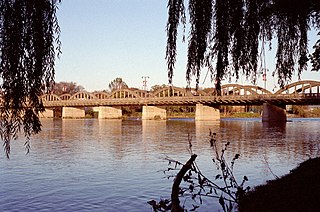
Haldimand County is a rural city-status single-tier municipality on the Niagara Peninsula in Southern Ontario, Canada, on the north shore of Lake Erie, and on the Grand River. Despite its name, it is no longer a county by definition, as all municipal services are handled by a single level of government. Municipal offices are located in Cayuga.

Six Nations is demographically the largest First Nations reserve in Canada. As of the end of 2017, it has a total of 27,276 members, 12,848 of whom live on the reserve. These nations are the Mohawk, Cayuga, Onondaga, Oneida, Seneca and Tuscarora. Some Lenape live in the territory as well.

The Cayuga are one of the five original constituents of the Haudenosaunee (Iroquois), a confederacy of Native Americans in New York. The Cayuga homeland lies in the Finger Lakes region along Cayuga Lake, between their league neighbors, the Onondaga to the east and the Seneca to the west. Today, Cayuga people belong to the Six Nations of the Grand River First Nation in Ontario, and the federally recognized Cayuga Nation of New York and the Seneca-Cayuga Tribe of Oklahoma.
Six Nations may refer to:
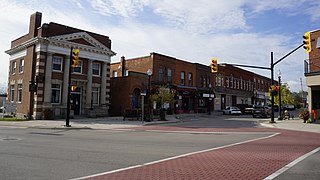
Cayuga is an unincorporated community and county seat of Haldimand County, Ontario, Canada located at the intersection of Highway 3 and Munsee Street and along the Grand River. Cayuga is about a 20-minute drive from Lake Erie and 30 minutes south of Hamilton and 115 minutes south of Toronto and consequently it has some cottages and recreational properties in the area. In the past, there was some light industry. It has the local district detachment for the Ontario Provincial Police. It is also uniquely located among larger communities on both the American and Canadian sides of the border boasting television reception from Toronto, Buffalo, New York, Hamilton, Kitchener and Erie, Pennsylvania.
First Nations in Ontario constitute many nations. Common First Nations ethnicities in the province include the Anishinaabe, Haudenosaunee, and the Cree. In southern portions of this province, there are reserves of the Mohawk, Cayuga, Onondaga, Oneida, Seneca and Tuscarora.

Cayuga is a Northern Iroquoian language of the Iroquois Proper subfamily, and is spoken on Six Nations of the Grand River First Nation, Ontario, by around 240 Cayuga people, and on the Cattaraugus Reservation, New York, by fewer than 10.
Levi General, commonly known as Deskaheh, was a Haudenosaunee (Iroquois) hereditary chief and appointed speaker noted for his persistent efforts to get recognition for his people. He is most famous for bringing Iroquois concerns before the League of Nations in the 1920s.

The Tutelo were Native American people living above the Fall Line in present-day Virginia and West Virginia. They spoke a dialect of the Siouan Tutelo language thought to be similar to that of their neighbors, the Monacan and Manahoac nations.

The Seneca–Cayuga Nation is one of three federally recognized tribes of Seneca people in the United States. It includes the Cayuga people and is based in Oklahoma, United States. The tribe had more than 5,000 people in 2011. They have a tribal jurisdictional area in the northeast corner of Oklahoma and are headquartered in Grove. They are descended from Iroquoian peoples who had relocated to Ohio from New York state in the mid-18th century.
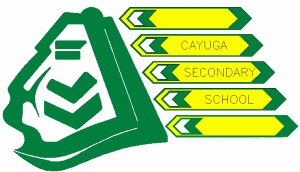
Cayuga Secondary School is a secondary school located at 70 Highway 54, Cayuga, Ontario, Canada. It is part of the Grand Erie District School Board. Cayuga Secondary School opened in 1963, under the name Cayuga Technical and Commercial High School since it did not offer a grade 13 program. It earned secondary school status in 1970. The students are from J. L. Mitchener, Rainham Central, Seneca Central Seneca Unity and Oneida Central public schools, Caledonia Centennial, as well as some students from the Six Nations Reserve and from the Catholic elementary school, St. Stephen's. The school currently has about 600 students enrolled.
Nikonha, also known as Waskiteng and Mosquito, was known as the last full-blooded speaker of Tutelo, a Virginia Siouan language. He is reported to have been around 106 years old when he died at Six Nations of the Grand River First Nation, Ontario in 1871, where his people had migrated with the Cayuga during the American Revolutionary War.

Tutelo, also known as Tutelo–Saponi, is a member of the Virginian branch of Siouan languages that were originally spoken in what is now Virginia and West Virginia in the United States.
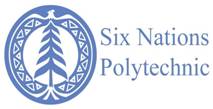
Six Nations Polytechnic (SNP) is a Haudenosaunee-governed Indigenous institute on Six Nations of the Grand River First Nation. SNP is an Indigenous Institute, the third pillar of post-secondary education in Ontario, as recognized by the Indigenous Institutes Act of 2017, The Six Nations of the Grand River First Nation are the Mohawk, Cayuga, Onondaga, Oneida, Seneca, and Tuscarora. The Six Nations of the Grand River First Nation reserve acreage at present covers some 46,000 acres (190 km2) near the city of Brantford, Ontario. Six Nations Polytechnic has two campuses, one located in Ohsweken and one located in Brantford.
The Lower Cayuga First Nation is a Cayuga First Nation in southern Ontario, and a member nation of the Six Nations of the Grand River. Its reserves include the shared reserves of Glebe Farm 40B and the Six Nations of the Grand River First Nation.
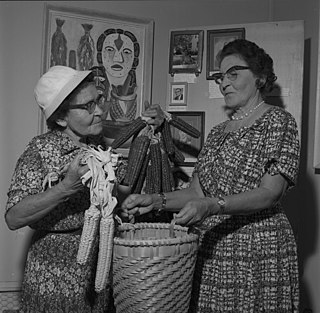
Julia L. Jamieson (1889–1975) was a member of the Six Nations of the Grand River in Canada.
Emily C. General (1908–1991) was a member of the Six Nations of the Grand River reserve in Canada. Born to Alexander General, a Cayuga, and Sophia Jones, who was Mohawk, she was a leader in the community, particularly through her career in education. Prior to becoming a teacher, General fought the RCMP's forced removal of twenty-one children from the community first to the Mohawk Institute Residential School and then to Chapleau Residential School, located 900 kilometres away from their community.
Fish Carrier or "Ojageght," which translates to English as "he is carrying a fish by the forehead strap," was an Iroquois chief of the Cayuga people. He supported the British during the American Revolution, participating in the Battle of Wyoming in 1778 and the Battle of Newtown in 1779.
Simeon Gibson was a member of the Cayuga tribe and the Onondaga Longhouse on the Six Nations Reserve. Gibson (Iroquois) worked closely with Iroquois researchers, including Horatio Hale, David Boyle, Mark Raymond Harrington, A.C. Parker, and John Napoleon Brinton (J.N.B.) Hewitt. Gibson worked with these researchers to interpret his father Chief Gibson’s two records of the Daganawi:dah legend.
Kiley May is a Mohawk and Cayuga storyteller, actor, screenwriter, filmmaker, and two-spirit activist in Toronto.